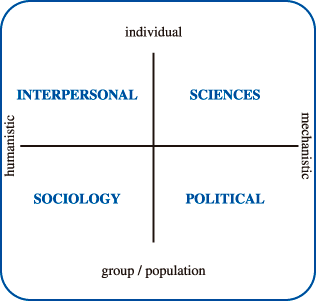Exploring the relationship of threshold concepts and Hodges’ model of care from the individual to populations and global health
DOI:
https://doi.org/10.15649/cuidarte.v8i3.464Resumen
Through academia, professional disciplines seek – whenever possible – to base their actions on theory rather than fact and historical practices. This serves to improve certainty and place curricula, research, and practice on the best footing in terms of knowledge and quality. This emphasis extends to the workplaces in which professionalised disciplines are learned and practised. In healthcare, great importance is placed upon evidence-based findings to support clinical practice. Although subject to ongoing debate, the quality of research is assessed against a yardstick that culminates in a ‘gold-standard’ of clinical trials and systematic reviews. What healthcare professionals do, should, whenever possible, be based upon evidence, not ritualised practices and missives, such as “I was trained this way” and “This is how we do things here”.
How to cite this article: Jones P. Exploring the relationship of threshold concepts and Hodges’ model of care from the individual to populations and global health. Rev Cuid. 2017; 8(3): 1697-720. http://dx.doi.org/10.15649/cuidarte.v8i3.464Referencias
The Cochrane Collaboration. Cochrane Handbook for Systematic Reviews of Interventions. Higgins JPT, Green S. editors. Version 5.1.0 [updated March 2011]. The Cochrane Collaboration. 2011. Available from: http://handbook.cochrane.org
Alligood MR. Nursing Theorists and Their Work. 8th ed. St Louis, MO: Mosby Inc. 2014.
Hodges BE. The Health Career Model. In: Hinchcliffe SM, (Ed.) Nursing Practice and Health Care. 1st Edition only, London, Edward Arnold. 1989.
Millard C, Wessely S. Parity of esteem between mental and physical health. BMJ, 2014; 349: g6821. https://doi.org/10.1136/bmj.g6821
National Institute for Health and Care Excellence (NICE). Patient experience in adult NHS services (NICE clinical guidance 138) recommendation 1.5.10. London: NICE. 2012. Available at: https://www.nice.org.uk/guidance/cg138 [Accessed: 17/07/2017].
Beta G, Lidaka A. The Aspect of Proficiency in the Theoretical Overview of Pedagogical Practice of Nurses. Procedia - Social and Behavioral Sciences. 2015; 174: 1957-65.
https://doi.org/10.1016/j.sbspro.2015.01.861
Mitchell G. Implications of Holding Ideas of Evidence-Based Practice in Nursing. Nursing Science Quarterly. 2013; 26(2): 143-51. https://doi.org/10.1177/0894318413477139
Han LD, Ko SS, Gu Z, Jeong MK. Adaptive weigh-in-motion algorithms for truck weight enforcement. Transportation Research Part C: Emerging Technologies. 2012; 24: 256-69. https://doi.org/10.1016/j.trc.2012.01.010
Crump KS. Use of threshold and mode of action in risk assessment. Critical Reviews in Toxicology. 2011; 41(8): 637-50. https://dx.doi.org/10.3109/10408444.2011.566258
Taylor C. Threshold Concepts in Biology (Chap. 6) In: Overcoming barriers to student understanding: threshold concepts and troublesome knowledge. Meyer J, Land R. (Editors). Abingdon: Routledge. 2006.
Land R, Meyer J, Smith J. Threshold concepts within the disciplines (Educational futures; 16). Rotterdam: Sense. 2008.
Lane N. The Vital Question. Why is life the way it is? London: WW Norton; 2015.
Bledsoe BP, Watson CC. Logistic analysis of channel pattern thresholds: Meandering, braiding, and incising. Geomorphology. 2001; 38(3): 281-300. https://doi.org/10.1016/S0169-555X(00)00099-4
Colman AM. A Dictionary of Psychology. Third edition. Oxford: OUP. 2009. p. 3. http://dx.doi:10.1093/acref/9780199534067.001.0001
Clouder L. Caring as a ‘threshold concept’: transforming students in higher education into health (care) professionals. Teaching in Higher Education. 2005; 10(4): 505-17. http://dx.doi.org/10.1080/13562510500239141
Batelaan N, Graaf R, Van AB, Vollebergh W, Beekman A. Thresholds for health and thresholds for illness: panic disorder versus subthreshold panic disorder. Psychological Medicine. 2007; 37(2): 247-56. http://dx.doi:10.1017/S0033291706009007
Bridson JM, Prescott D, Guha A, Strivens J, Taylor D. Implementation of Critical Threshold Concept in Clinical Transplantation: A New Horizon in Distance Learning. World Journal of Educational Research. 2017; 4(2): 301-12. http://dx.doi.org/10.22158/wjer.v4n2p301
Nambiar-Greenwood G. The role of mental health as a “threshold concept” for promoting patient-centred care for inter-professional health students. The Journal of Mental Health Training, Education and Practice. 2010; 5(4): 12-7. https://doi.org/10.5042/jmhtep.2010.0686
Morgan H. The Social Model of Disability as a Threshold Concept: Troublesome Knowledge and Liminal Spaces in Social Work Education. Social Work Education. 2012; 31(2): 215-26. http://dx.doi.org/10.1080/02615479.2012.644964
Stacey G, Stickley T. Recovery as a threshold concept in mental health nurse education. Nurse Education Today. 2012; 32(5): 534-39. http://dx.doi.org/10.1016/j.nedt.2012.01.013

Descargas
Publicado
Cómo citar
Descargas
Número
Sección
Licencia
Journal Cuidarte, scientific publication of open access, is licensed under a Creative Commons Attribution (CC BY-NC), which permits use, distribution and reproduction in any medium, provided the original work is properly cited and is not used for commercial purposes.
Any other form of use such as reproduction, transformation, public communication or distribution, for profit, requires the prior authorization of the University of Santander UDES.
The names and e-mail addresses entered in the Journal Cuidarte will be used exclusively for the purposes stated by this magazine and will not be available for any other purpose or other person.
The articles published in the Journal Cuidarte represent the criteria of their authors and do not necessarily constitute the official opinion of the University of Santander UDES.



